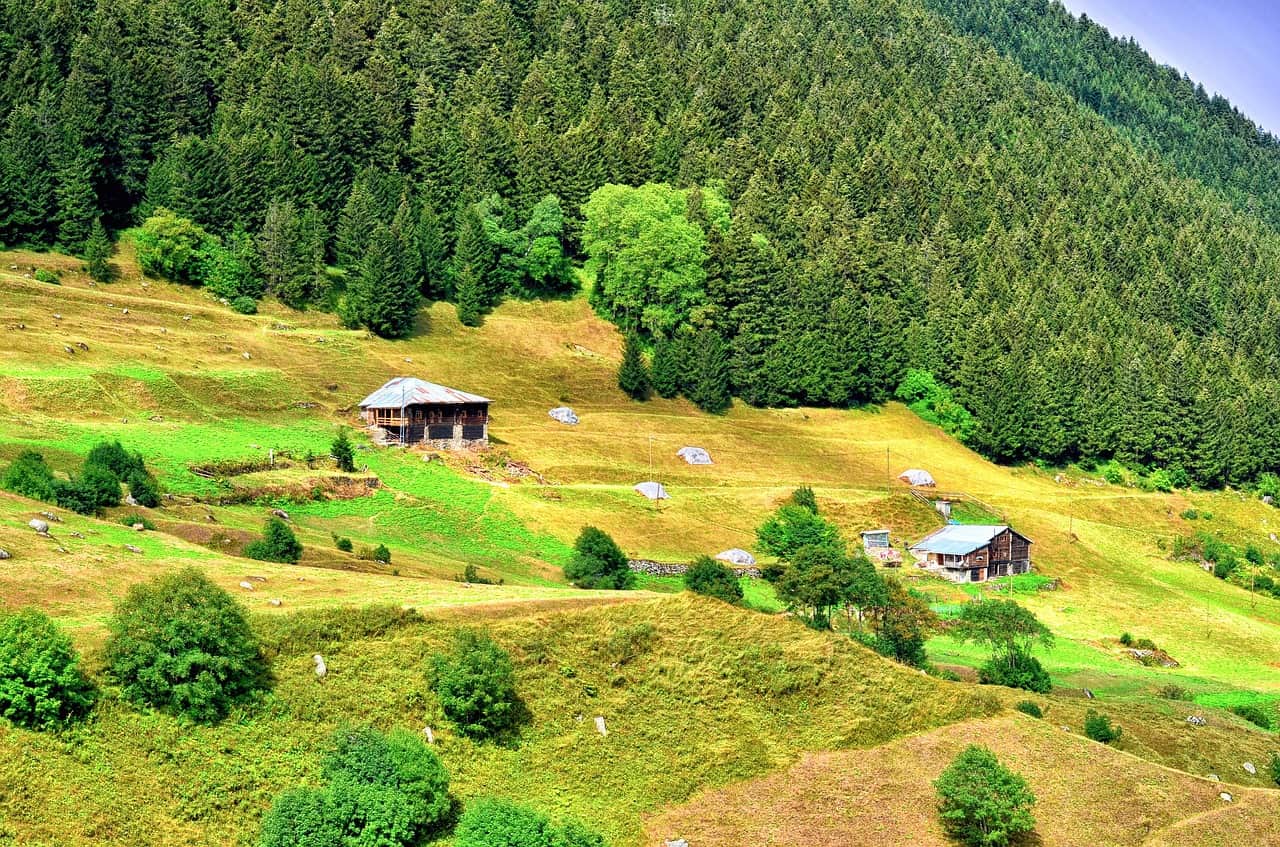Sometimes, life delivers lemons in the form of a slope as the only viable option for a vegetable garden on a slope. Making lemonade out of a blooming vegetable garden can be tough, similar to the everyday difficulties faced by individuals.
Fortunately, there are numerous techniques to address this problem successfully. You may set up your vegetable garden on a slope if it is not excessively steep and you can work comfortably on it. If the slope is too steep, you may as well give up; rainwater will easily wash the soil downhill regardless of your efforts.
So if you have a sloping piece of land you want to use to grow your favorite crops, you’d be shown all the strategies on how you can plant a vegetable garden on a slope.
Table of Contents
Is It Possible To Grow Vegetable garden On a Slope?
While most individuals would desire flat ground, this isn’t always an option. If your only option is a sloping piece of land, it doesn’t have to be a deterrent. A vegetable garden may be grown on any kind of ground if properly designed and maintained.
The procedure for planting a vegetable garden on a slope is identical to that of planting on level ground. The only exception is the few steps needed to prepare the soil. However, you must expect to put in more work and expense into leveling the land so that it is suitable for growing vegetables.
In general, the following are the stages in creating a vegetable garden on a slope:
- Selecting a site that is suitable for your garden
- Preparing the soil before planting
- Preparing the bed for the garden
- Watering the bed or irrigation
You’ll quickly understand from the explanation that the most challenging component of the project is building the garden bed. The slope’s steepness loosely reflects the difficulty level. If you have to work on a rather steep slope, your job has been cut out for you.
Choosing a location for your vegetable garden
When it comes to selecting a location for your garden, the grade of slope is quite crucial. A gradual slant is easier to work with than a steep one, as previously said.
Choose a location that receives the most daily sunlight if possible. In this situation, you’re looking for the side of the hill that faces south. This part of the slope warms up faster, which is beneficial when growing vegetables.
If you must pick between a West-facing slope and an East-facing slope, choose the latter. Because of this, East-facing slopes are beneficial in the morning sun. The vegetables would likewise be protected from the stronger afternoon heat.
If you’re choosing this undesirable East-facing slope, make sure the lowest-growing plants are placed higher up the slope to avoid creating excessive shade for the plants on the downhill side.
You may also take advantage of the surrounding ecosystem to increase agricultural yields. You could also utilize climatic conditions around the hill to your advantage. The top side of the hill is likely to be warmer and drier than the bottom, so bring plants that thrive in wet upon on it for a good yield.
Preparation of soil
Prepare the soil in your garden as you would for a typical garden. This implies first ridding weeds and rubbish from the land.
To prevent erosion-prone slopes, add three inches of compost to enhance the soil’s structure. Stator to improve the soil, you should use an all-purpose fertilizer specifically made for gardens. This is to compensate for the inevitable soil nutrient depletion that occurs as a result of slopes losing water (as well as the nutrients dissolved in the water) quickly.
Check the fertilizer package for specific instructions on how to apply that particular fertilizer.

Preparing land for vegetable garden on a slope
The size of the garden beds will also influence how steep a slope is used to grow vegetables. Beds for the vegetable garden on a slope may be constructed in two ways: perpendicular contours or terraced gardens.
The simplest strategy is to construct the beds as they would on flat ground. However, if the slope is not too steep, the rows are built perpendicular or horizontally across the hill.
Straight gardening rows (vegetable beds) would divert water away from the plants, increasing erosion.
For extremely steep slopes, terraced beds are the best choice. This is done to stabilize the slope since water flow might cause soil erosion and nutrient loss.
The design of the terraced beds should make it simple to plant and maintain the garden.
A terraced vegetable garden is all about constructing raised garden beds. And, when building the beds, it’s best to begin at the bottom of the slope and work your way up.
Terrace foundations are also an excellent choice for properties with poorly draining soils. You may simply lift the garden bed to a higher level with terracing, which helps drainage.
Some of the methods for turning a steep slope into a vegetable garden are shown below.
Dry Stack Walls
Natural stone without mortar is used to create these walls. To build the wall, stones are placed on top of one another. Stacked walls are naturally draining, which makes them ideal for terraced gardens on hilltops.
Because the walls slant back somewhat, they can be planted in a single pass. Because of this design, subsequent planting seasons may be done without restacking the walls.
You may get concrete wall products in any construction store for the project if you don’t have stones to make the walls. They’re simpler to work with than natural stones. The uniform size of the concrete bricks makes stacking quicker and easier.
Wood is cut into boards or logs.
Another alternative for a vegetable garden on a slope is to utilize wood-based materials like landscape timbers, logs, or wood boards (preferably 4x6s). However, since the wood is untreated, it is prone to decay and will not endure long in wet soil. The decaying timber may need to be replaced every few years as a result of a fungus.
There is a benefit to using this approach, though. The rotting wood stimulates the growth of fungus in the surrounding soil, increasing mycelium production. In fact, due to the presence of decaying wood
Plastic and Steel panel walls
Steel-panel and plastic-material terracing that resembles wood are becoming more popular in vegetable gardens on a slope. They may be more costly, but they last as long as the garden does, making this a one-time expense with long-term savings and lower labor over time.
However, there are worries regarding the chemicals that may be released into the soil by plastic materials. As a result, you must make certain that the plastics you employ are free of hazardous chemicals.

